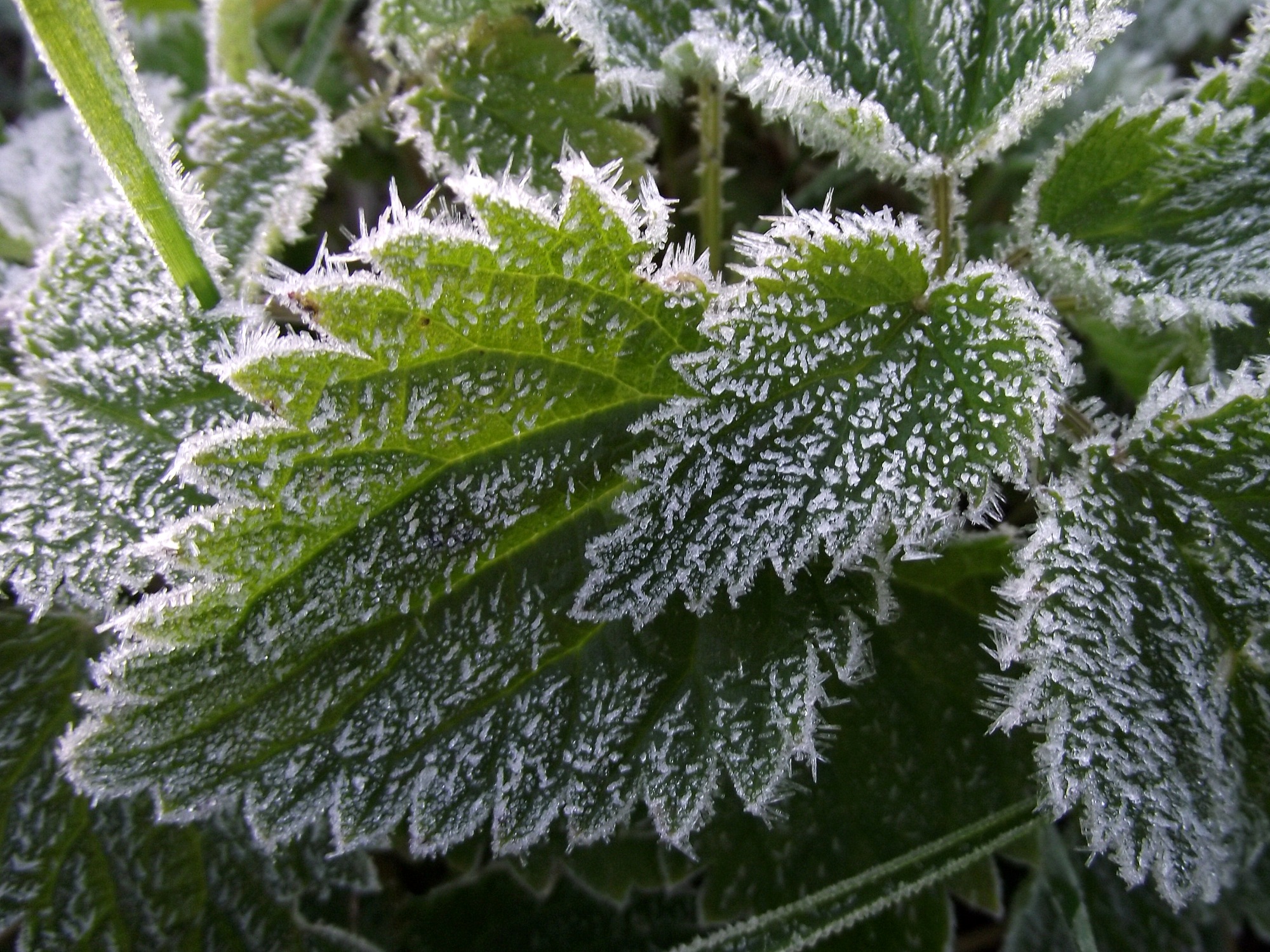The bacterium Pseudomonas syringae [1] impacts human existence in many ways. It gets its species name from the lilac tree (Syringa vulgaris), which it was first isolated from.[2] It is now known to cause disease on a variety of agricultural and ornamental plants, including maples, beets, wheat, barley, crabapples, peas, the genus Prunus (which includes almonds, apricots, cherries, peaches, and plums), beans, horse chestnuts, and kiwifruit.[3]
However, it is also capable of harming plants which are not normally its hosts. This is because Pseudomonas syringae produces special proteins which encourage ice crystals to form (a process called ice nucleation). This frost damage causes plant cells to burst open, releasing their nutrients for the bacteria to steal. To combat this, scientists have genetically engineered strains of Pseudomonas syringae which lack the genes to cause ice nucleation. These artificial strains of Pseudomonas syringae are known as ice-minus bacteria.[4] When ice-minus bacteria are sprayed on plants, they reduce the effectiveness of the native Pseudomonas syringae strains, which results in less frost damage.
The ability of Pseudomonas syringae to nucleate the formation of ice crystals has more far-reaching effects than just causing frost damage to plants. Until recently it was believed that snowflakes formed around tiny particles of dust or soot. But it has now been determined that Pseudomonas syringae is present in the atmosphere in substantial numbers. Since they cause the formation of ice crystals at higher temperatures than do dust and soot particles, Pseudomonas syringae bacteria are now believed to be primarily responsible for snowfall.[5][6][7] So next time you go outside to catch snowflakes on your tongue, just remember that you have a bacterium to thank for it.
Notes:
[1] It produces pyoverdin, just like the closely related species, Pseudomonas fluorescens, which I've posted pictures of, here (scroll down).
[2] See microbewiki.kenyon.edu/index.php/Pseudomonas syringae.
[3] See http://en.wikipedia.org/wiki/Pseudomonas syringae.
[4] See http://en.wikipedia.org/wiki/Ice-minus bacteria.
[5] This process is known as bioprecipitation and also includes bacterially-caused rainfall. See http://en.wikipedia.org/wiki/Bioprecipitation.
[6] Some ski resorts already take advantage of this feature of Pseudomonas syringae, by using it to seed clouds and cause snowfall on their resorts. See http://www.eurekalert.org/pub_releases/2008-02/lsu-lsf022808.php.
[7] Because of the pivotal role of Pseudomonas syringae in the water cycle, there is some concern that overuse of ice-minus bacteria in agriculture could actually disrupt rainfall and snowfall. See http://www.maykuth.com/Archives/gene86.htm.
Image attributions:
Frost on Nettle Leaves is by Robert Reisman, available at http://commons.wikimedia.org/wiki/File:Frost_on_nettle_leaves.jpg.
However, it is also capable of harming plants which are not normally its hosts. This is because Pseudomonas syringae produces special proteins which encourage ice crystals to form (a process called ice nucleation). This frost damage causes plant cells to burst open, releasing their nutrients for the bacteria to steal. To combat this, scientists have genetically engineered strains of Pseudomonas syringae which lack the genes to cause ice nucleation. These artificial strains of Pseudomonas syringae are known as ice-minus bacteria.[4] When ice-minus bacteria are sprayed on plants, they reduce the effectiveness of the native Pseudomonas syringae strains, which results in less frost damage.
The ability of Pseudomonas syringae to nucleate the formation of ice crystals has more far-reaching effects than just causing frost damage to plants. Until recently it was believed that snowflakes formed around tiny particles of dust or soot. But it has now been determined that Pseudomonas syringae is present in the atmosphere in substantial numbers. Since they cause the formation of ice crystals at higher temperatures than do dust and soot particles, Pseudomonas syringae bacteria are now believed to be primarily responsible for snowfall.[5][6][7] So next time you go outside to catch snowflakes on your tongue, just remember that you have a bacterium to thank for it.
Notes:
[1] It produces pyoverdin, just like the closely related species, Pseudomonas fluorescens, which I've posted pictures of, here (scroll down).
[2] See microbewiki.kenyon.edu/index.php/Pseudomonas syringae.
[3] See http://en.wikipedia.org/wiki/Pseudomonas syringae.
[4] See http://en.wikipedia.org/wiki/Ice-minus bacteria.
[5] This process is known as bioprecipitation and also includes bacterially-caused rainfall. See http://en.wikipedia.org/wiki/Bioprecipitation.
[6] Some ski resorts already take advantage of this feature of Pseudomonas syringae, by using it to seed clouds and cause snowfall on their resorts. See http://www.eurekalert.org/pub_releases/2008-02/lsu-lsf022808.php.
[7] Because of the pivotal role of Pseudomonas syringae in the water cycle, there is some concern that overuse of ice-minus bacteria in agriculture could actually disrupt rainfall and snowfall. See http://www.maykuth.com/Archives/gene86.htm.
Image attributions:
Frost on Nettle Leaves is by Robert Reisman, available at http://commons.wikimedia.org/wiki/File:Frost_on_nettle_leaves.jpg.

This is such a Matt post. Makes me laugh.
ReplyDelete